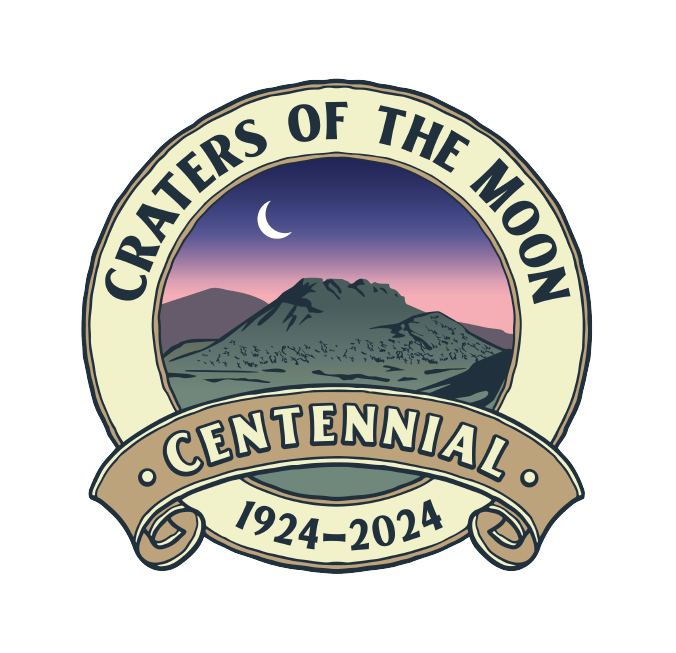News Release

|
Subscribe
|
Contact: Wade Vagias, 406-581-1367
Note: A recording of an April 15 media briefing with additional information is available at
Multimedia Resources - Craters Of The Moon National Monument & Preserve (U.S. National Park Service) (nps.gov)
ARCO, Idaho — “A weird and scenic landscape peculiar to itself.” Those words are still as accurate today to describe the Craters of the Moon National Monument in southern Idaho as they were when President Calvin Coolidge issued a proclamation to establish it on May 2, 1924.
The National Park Service (NPS), in collaboration with partners and the public, will celebrate Craters of the Moon National Monument’s centennial from May through September this year by hosting a variety of public activities and events each month, including special exhibits at the Robert Limbert Visitor Center; star parties; full moon, wildflower, and geology hikes; and activities led by five Artists-in-Residence.
The centennial celebrations will officially begin on Thursday, May 2, which Governor Brad Little has declared as “Craters of the Moon Centennial Day” in Idaho in a proclamation. The park will host a Centennial walk at 1:00 p.m. MDT that afternoon and a “People of the Moon” program on Saturday, May 4 at 1:00 p.m. MDT. Additional details and reservation information for these and other Centennial events is available on the park website at go.nps.gov/CRMO100
Monthly activities and events will center on different themes, or “Phases of the Moon,” that reflect the varied perspectives, values, and significances of Craters of the Moon over the last 100 years. These include its rich cultural history, tranquil wilderness, robust research, explosive geology, and expansive night sky.
“Craters of the Moon was initially set aside to protect its superlative volcanic features for general interest, education, and scientific purposes,” said Wade Vagias, superintendent of Craters of the Moon National Monument & Preserve. “In addition to these geologic wonders, over the last century, we have discovered that there is so much more to this ‘weird and scenic’ landscape.”
When Craters of the Moon was established, the national monument encompassed approximately 54,000 acres. Over the last 100 years, it has been expanded four times. Today, Craters of the Moon National Monument & Preserve includes approximately 738,000 acres of federal land that the NPS and Bureau of Land Management co-manage.
Craters of the Moon’s volcanic features include fissure sites that are estimated to have erupted between 15,000 and 2,000 years ago and volcanic cones, craters, rifts, lava flows, caves, natural bridges, and other phenomena those eruptions created.
The park has a rich cultural history that begins as the ancestral lands of the Shoshone and Bannock peoples; over 43,000 acres of tranquil designated wilderness; robust research opportunities that NASA scientists and astronauts and others have taken advantage of since 1969; and an expansive dark night sky that makes it one of the last best places for stargazing in the country.
This special anniversary provides the perfect moment for both new and returning visitors to take the time to explore Craters of the Moon as a destination in its own right. The NPS invites visitors to experience the many opportunities that are being offered this year to learn about its history, diversity, and complexity. Additional information to help plan a visit to “the Moon” is available at go.nps.gov/CRMO100
Last updated: October 10, 2024
